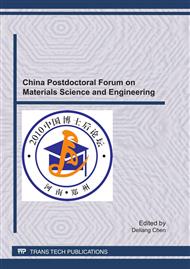p.98
p.102
p.106
p.110
p.114
p.118
p.122
p.126
p.130
Effects of Fineness on Activity Character of Fly Ash
Abstract:
The hydrated character of cement paste with fly ash was studied, through the methods of compressive strength, non-evaporable water content, reaction degree of fly ash and micro-analysis. The results indicated that the chemical activity of fly ash was an accumulative change process under this test condition. The starting point of chemical reaction of fly ash was nearby 28 days. In front of 28 days, the chemical activation of fly ash was not wakened, and the compressive strength of cement pastes with fly ash at this age was mainly from multiplex effects of cement hydration and the micro-aggregate effect, granule morphology effect and pozzolanic effect of fly ash.
Info:
Periodical:
Pages:
114-117
Citation:
Online since:
June 2011
Authors:
Keywords:
Price:
Сopyright:
© 2011 Trans Tech Publications Ltd. All Rights Reserved
Share:
Citation:


